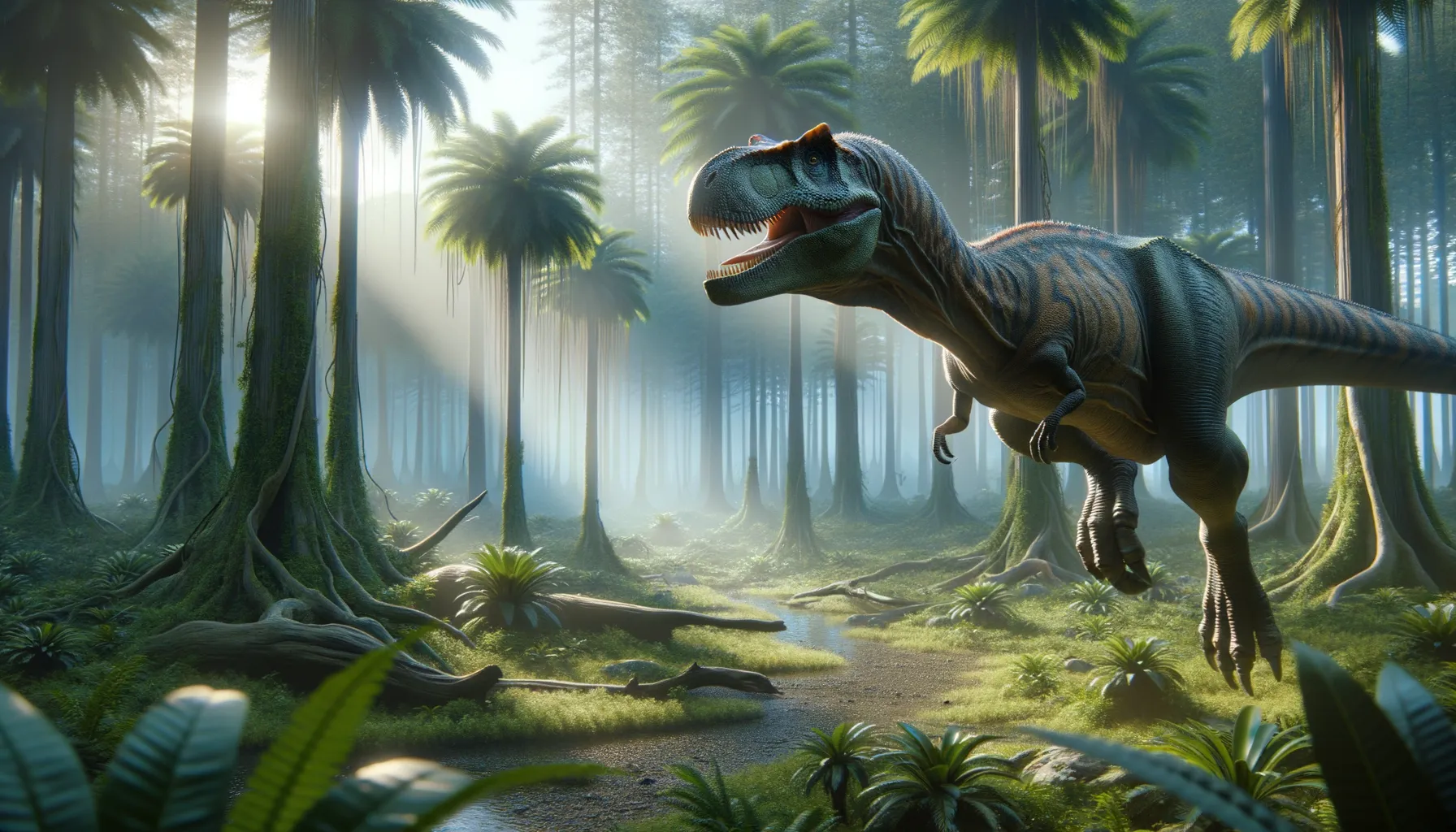
Yibinosaurus
Graceful giant of Jurassic greenery.
Period
Jurassic
Length
About 5 meters in length.
Height
Around 3 meters tall.
Weight
Approximately 1 to 2 tons.
Yibinosaurus was a herbivorous dinosaur that roamed the Earth during the Jurassic period. Its fossils were first discovered in China, providing insights into its unique features and behaviors. Known for its moderate speed and relatively large size among herbivores, Yibinosaurus played a vital role in its ecosystem. Its anatomy suggests adaptations to a plant-based diet, which helped it thrive among other prehistoric flora and fauna.
Diet
As a herbivore, Yibinosaurus primarily fed on a variety of plants, including ferns, cycads, and conifers. Its teeth and jaw structure suggest it was well-adapted for chewing tough vegetation.
Hunting
Yibinosaurus did not hunt as it was a herbivore. Instead, it spent much of its time grazing and foraging for plant-based food sources within its environment.
Environmental challenges
Yibinosaurus faced challenges such as climatic changes, which could affect the availability of plant life. Predation by carnivorous dinosaurs was also a potential threat. The need to migrate in search of food and water during dry periods likely required efficient energy use and social cooperation among its herd.
Speed
Moderate pace, suitable for grazing.
Lifespan
Estimated to live for 20-30 years.
First discovery
Discovered in Sichuan Province, China in 2004.
Fun Facts
- Yibinosaurus was a plant-eating dinosaur that lived during the Early Jurassic period.
- It was discovered in the Sichuan Province of China, an area rich with dinosaur fossils.
- Yibinosaurus had a long neck, which helped it reach high foliage in search of food.
- This dinosaur is part of the sauropod family, known for their massive size and distinctive body shapes.
- Yibinosaurus is one of the earliest known sauropods, providing insights into the evolution of these giant creatures.
- Unlike some of its larger relatives, Yibinosaurus was relatively small, measuring around 6 meters in length.
- Its name, Yibinosaurus, honors the place where it was found, reflecting both its heritage and discovery location.
Growth and Development
Yibinosaurus hatched from eggs and experienced rapid growth to achieve a size that provided some protection from predators. Juvenile Yibinosaurus likely stayed close to adults for safety. Growth rates may have slowed as they reached maturity, allowing them to allocate resources towards reproduction and maintenance.
Habitat
This dinosaur inhabited forested areas with plenty of vegetation. It likely preferred regions with sufficient water sources and open fields for grazing. Its environment supported a diverse range of plant life, which was crucial for its survival as a herbivore.
Interaction with other species
Yibinosaurus may have coexisted with other herbivorous dinosaurs, possibly forming mixed herds for greater protection. It also had to contend with predators, necessitating vigilance and possibly even communal defense mechanisms. Non-dinosaurian contemporaries would have included early mammals and reptiles with which it shared its habitat.
Natural lifespan
Yibinosaurus likely lived for around two to three decades in the wild.
Reproduction
Yibinosaurus reproduced by laying eggs, which were likely buried or hidden among plants to protect them from predators. Parental care might have involved guarding nesting sites until the eggs hatched. Once hatched, the young would have quickly integrated into the herd for protection.
Social behaviour
Yibinosaurus likely lived in groups or herds, providing safety in numbers. Herd behavior would have facilitated communication and navigation of the landscape, especially in response to threats. Social interactions among individuals may have included vocal calls and physical gestures.
Fossil locations
Fossils of Yibinosaurus have been primarily found in the Sichuan Province of China. These discoveries have provided important information about its anatomy and ecological role. The fossil sites have yielded significant insights into the Jurassic ecosystems of that region.
